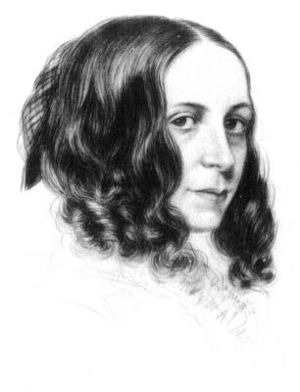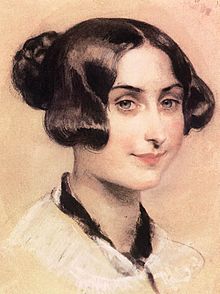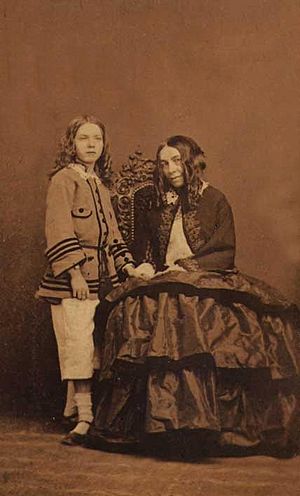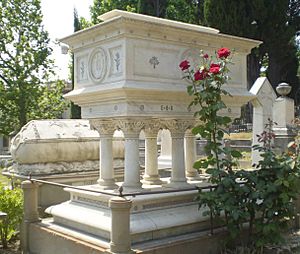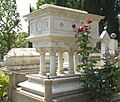Elizabeth Barrett Browning facts for kids
Quick facts for kids
Elizabeth Barrett Browning
|
|
|---|---|
 |
|
| Born | Elizabeth Barrett Moulton-Barrett 6 March 1806 Coxhoe, County Durham, England |
| Died | 29 June 1861 (aged 55) Florence, Kingdom of Italy |
| Occupation | Poet |
| Literary movement | Romanticism |
| Spouse | |
| Children | Robert Wiedeman Barrett "Pen" Browning |
Elizabeth Barrett Browning (born Elizabeth Moulton-Barrett; 6 March 1806 – 29 June 1861) was a famous English poet. She was very popular in Britain and the United States during her lifetime. She lived during the Victorian era, a time when Queen Victoria ruled England.
Elizabeth was born in County Durham, England. She was the oldest of 12 children. She started writing poems when she was just eleven years old. Her mother collected her early poems. This collection is one of the biggest by any English writer from their childhood. When she was 15, Elizabeth became ill. She had severe head and back pain for the rest of her life. Later, she also developed lung problems.
In the 1840s, Elizabeth met many writers and artists. This happened through her distant cousin, John Kenyon. Her first book of poems for adults came out in 1838. She wrote a lot between 1841 and 1844. She wrote poems, translated works, and wrote essays. Elizabeth spoke out against slavery. Her writing also helped change laws about child labor. She was so good that some people thought she might become the next Poet Laureate. This is a special poet chosen by the British monarch.
Elizabeth's book Poems (1844) was a huge success. It caught the attention of another famous writer, Robert Browning. They started writing letters to each other. Their romance and marriage were kept secret. This was because Elizabeth feared her father's disapproval. After they married, her father did not speak to her again. In 1846, the couple moved to Italy. Elizabeth lived there for the rest of her life. They had one son, named Robert Wiedeman Barrett Browning (1849–1912). They called him "Pen." Elizabeth died in Florence in 1861. Her husband published a collection of her last poems after she passed away.
Elizabeth's poems greatly influenced other famous writers. These included American poets Edgar Allan Poe and Emily Dickinson. She is best known for poems like "How Do I Love Thee?" (Sonnet 43, 1845). Another famous work is her long poem Aurora Leigh (1856).
Contents
Elizabeth's Early Life
Family and Home
Elizabeth Barrett's family had lived in Jamaica since 1655. Their money came mostly from large farms called plantations. These plantations used enslaved people from Africa to grow crops like sugar. Her family also owned sugar mills and ships. These ships traded goods between Jamaica and England.
The family wanted to keep their name, Barrett, going strong. So, they often asked people who inherited money to use Barrett as part of their name. Elizabeth used "Elizabeth Barrett Moulton Barrett" on legal papers. Before she married, she often signed her name "Elizabeth Barrett Barrett" or "EBB." Elizabeth's father decided to raise his family in England. But his businesses stayed in Jamaica.
Growing Up
Elizabeth Barrett Moulton-Barrett was born on March 6, 1806. She was born in Coxhoe Hall, in County Durham, England. Her parents were Edward Barrett Moulton-Barrett and Mary Graham Clarke. Elizabeth was the oldest of 12 children. She had eight brothers and three sisters. Eleven of them lived to be adults.
Elizabeth had the nickname "Ba." She enjoyed riding her pony and going on family picnics. She also liked to act in plays at home. But unlike her brothers and sisters, she loved to read books. She would read whenever she could.
In 1809, her family moved to Hope End. This was a large estate near the Malvern Hills in Ledbury, Herefordshire. Her father built a new house there. It was designed in a fancy Turkish style. Her mother said it looked like something from the Arabian Nights. This beautiful home inspired Elizabeth later. It helped her write her most important work, Aurora Leigh (1856).
Elizabeth was taught at home by a tutor, Daniel McSwiney. She started writing poems when she was only four years old. She was a very smart and eager child. She said that by age six, she was reading novels. At eight, she loved Pope's translations of Homer. She started studying Greek at ten. By eleven, she was writing her own long poem, The Battle of Marathon: A Poem.
In 1820, her father privately published The Battle of Marathon. All the copies stayed within the family. Her mother collected her childhood poems. Her father called her the "Poet Laureate of Hope End." He encouraged her writing. This is why we have so many of her early poems today.
Around this time, Elizabeth became ill. Doctors at the time could not figure out what was wrong. She had severe head and back pain. This made it hard for her to move. This illness lasted for the rest of her life.
By 1821, she had read Mary Wollstonecraft's A Vindication of the Rights of Woman. This book made her a strong supporter of women's rights. She was also very interested in religion.
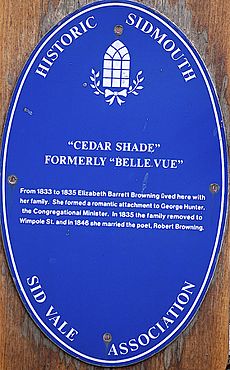
Elizabeth's mother died in 1828. Her grandmother also passed away in 1831. Because of changes in laws about slavery, her father lost a lot of money. He had to sell Hope End. The family was never poor, but they had to move.
Between 1833 and 1835, she lived with her family in Sidmouth. In 1838, the family settled at 50 Wimpole Street in London.
In 1837–38, Elizabeth became ill again. Doctors thought it was a lung problem. She moved to Torquay by the sea to recover. Then, two sad things happened. In February 1840, her brother Samuel died. In July, her favorite brother, Edward ("Bro"), drowned in a sailing accident. These events made her health even worse. The family returned to Wimpole Street in 1841.
Becoming a Famous Poet
Life at Wimpole Street
At Wimpole Street, Elizabeth spent most of her time in her room upstairs. Her health slowly got better. She saw few people, mostly her family. One visitor was John Kenyon, a rich friend and distant cousin. He supported artists. Elizabeth also found comfort in her dog, Flush, a gift from her friend Mary Mitford. (The writer Virginia Woolf later wrote a novel about Flush.)
Between 1841 and 1844, Elizabeth wrote many poems. She also translated works and wrote essays. Her poem The Cry of the Children, published in 1842, spoke out against child labor. It helped bring about new laws to protect children working in factories.
In 1844, she published a two-volume book called Poems. This book included famous works like "A Drama of Exile" and "Lady Geraldine's Courtship." Her many writings made her a strong candidate for Poet Laureate.
A Royal Society of Arts blue plaque now marks Elizabeth's home at 50 Wimpole Street.
Meeting Robert Browning and Moving to Italy
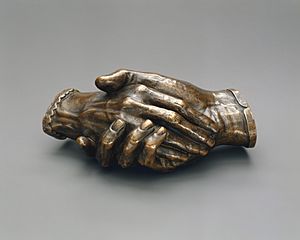
Her 1844 book Poems made her one of the most popular writers. It also inspired Robert Browning to write to her. He told her, "I love your verses with all my heart, dear Miss Barrett." He praised her "fresh strange music" and "true new brave thought."
John Kenyon arranged for Robert to meet Elizabeth on May 20, 1845. This meeting started one of the most famous love stories in literature. Elizabeth had already written a lot. But Robert greatly influenced her later poems. She also influenced his writing. Two of Elizabeth's most famous works, Sonnets from the Portuguese and Aurora Leigh, were written after she met Robert.
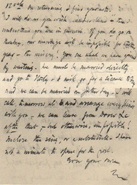
Robert and Elizabeth kept their romance and marriage a secret. They knew her father would not approve. They married privately at St Marylebone Parish Church. Then they went to Paris for their honeymoon. In September 1846, they moved to Italy. Italy became their home until Elizabeth's death. Elizabeth's loyal maid, Elizabeth Wilson, went with them to Italy.
Elizabeth's father did not approve of her marriage. He cut her out of his will, just as he did with his other children who married. But Elizabeth had some money of her own. So, the couple lived comfortably in Italy. The Brownings were well-known and respected. Elizabeth's health improved. In 1849, at age 43, she gave birth to their son, Robert Wiedeman Barrett Browning. They called him Pen.
Robert insisted that Elizabeth's second edition of Poems include her love sonnets. This made her even more popular. It also confirmed her place as an important artist.
The couple met many artists and writers in Italy. These included William Makepeace Thackeray and sculptor Harriet Hosmer. She also met Margaret Fuller and French novelist George Sand.
Later Years and Death
After the death of a friend and then her father, Elizabeth's health got worse. The Brownings moved from Florence to Siena. Elizabeth was very interested in Italian politics. She published a small book of political poems called Poems before Congress (1860). These poems showed her support for Italy's fight for independence. The book caused a stir in England. Some magazines called her a fanatic. She dedicated this book to her husband. Her last poem was A Musical Instrument, published after her death.
Elizabeth's sister Henrietta died in November 1860. The couple spent the winter of 1860–61 in Rome. Elizabeth's health got even worse there. They returned to Florence in early June 1861. She became weaker and weaker. She died on June 29, 1861, in her husband's arms. Robert said she died "smilingly, happily, and with a face like a girl's." Her last word was "Beautiful." She was buried in the Protestant English Cemetery of Florence.
Elizabeth's Published Works
Elizabeth Barrett Browning's first known poem was written when she was six or eight. It was called "On the Cruelty of Forcement to Man." This poem spoke out against forcing people into the navy.
Her first published poem was "Stanzas Excited by Reflections on the Present State of Greece." It appeared in a magazine in May 1821.
Her first collection of poems, An Essay on Mind, with Other Poems, came out in 1826. It showed her love for Lord Byron and Greek politics. This book caught the attention of scholars who studied Greek. She later translated Aeschylus' Prometheus Bound (published in 1833).
Elizabeth was against slavery. She published two poems about how terrible slavery was. These poems showed her support for ending slavery. She wrote to John Ruskin in 1855, "I belong to a family of West Indian slaveholders, and if I believed in curses, I should be afraid." Her father and uncle owned enslaved people until slavery was abolished.
In London, John Kenyon introduced Elizabeth to many literary figures. These included William Wordsworth, Mary Russell Mitford, and Thomas Carlyle. Elizabeth kept writing. She also wrote letters to other writers, like Mary Russell Mitford, who became a close friend.
In 1838, The Seraphim and Other Poems was published. This was the first book of her more mature poems published under her own name.
Sonnets from the Portuguese was published in 1850. The title might refer to a 16th-century Portuguese poet. But "my little Portuguese" was also a special nickname Robert Browning had for Elizabeth.
Her long poem Aurora Leigh, came out in 1856. It was her most ambitious work. It tells the story of a female writer trying to make her way in life. It explores how she balances her work and love. This poem was based on Elizabeth's own experiences. Aurora Leigh was very important for Susan B. Anthony. It made her think about women's traditional roles. The North American Review praised the poem. It said Elizabeth's poems were "the utterance of a woman — of a woman of great learning, rich experience, and powerful genius."
Images for kids
See also
 In Spanish: Elizabeth Barrett Browning para niños
In Spanish: Elizabeth Barrett Browning para niños


